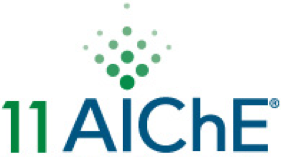

Simulation Study of Different Alternatives for Isoamyl Butyrate Production by Using Aspen Plus®
Jairo Duran, Karen Cañón, Iván Gil, Gerardo Rodríguez, Julio Vargas
Grupo de Procesos Químicos y Bioquímicos. Department of Chemical and Environmental Engineering. Universidad Nacional de Colombia. Bogotá. Colombia
The Isoamyl butyrate is a value-added product widely used in fragrances and flavors, therefore its production can be interesting for this kind of industries and can be the basis for business approach. Otherwise, the production process may be included in the green chemical engineering field because the use of raw materials from renewable resources, for instance, isoamyl alcohol can be obtained from fusel oil, a well known by-product from ethanol production. This work presents the simulation and the analysis of the conventional scheme for ester production and the coupled reactor/column configurations. The total annual cost (TAC) has been used as a comparison and evaluation criterion to explore the alternatives of production and determine which one presents the best performance at a lower cost.
Due to the lack of experimental data on vapor-liquid equilibrium (VLE) of the isoamyl butyrate ? isoamyl alcohol, it was necessary to obtain experimentally those data. Vapor-liquid equilibrium data were measured at 101.3 kPa. A dynamic equilibrium apparatus was used for the measurements (Fischer Labodest VLE-602). Equilibrium data were fitted with UNIFAC and NRTL models, obtaining a maximum absolute error of 2.5%. Herrington area test was performed using some criteria reported at literature. Also, Van Ness test was used as modelling capability test for NRTL and UNIFAC models. Good thermodynamic consistency was found with both tests.
After obtaining reliable thermodynamic data, it was possible to begin an analysis of each scheme of production. The process simulation has been performed by using Aspen Plus®. UNIFAC and Peng-Robinson with Wong Sandler mixing rules were set as property methods. It was preferred to use Wong Sandler mixing rules over others because the benefits of extrapolation on the model to other pressures as reported in the literature. Operations where the isoamyl butyrate-isoamyl alcohol VLE is relevant for the design, such as distillation columns, were simulated by using parameters obtained from regressed model, however for the other operations, default UNIFAC parameters were used for modeling. Economic analysis includes the estimation of fixed and variable costs of the process by using equations and heuristics from literature. Coupled reactor/column resulted with the lower TAC using a base production of 200 000 kg/yr which is the average consumption of isoamyl butyrate in Colombia. It is expected that the results presented in this work will be the comparison criteria of a base study on reactive distillation process for this system.
Keywords: Acidic catalysts, coupled reactor/column, esterification, fixed costs, Isoamyl butyrate, liquid-vapor equilibrium, operational costs.
Some Cited References
µ Kang J.W., Diky W., Chirico R., Magee J.W., Muzny C.D., Abdulagatov I., Kazakov A, Frenkel M. Quality Assessment Algorithm for Vapor-Liquid Equilibrium Data. J. Chem. Eng. Data, 2010, 55 (9), pp 3631?3640.
µ Stanley I., Orbey H. Mixing and Combining Rules. Available on Equations of State for Fluids and Fluid Mixtures by Sengers J.V., Kayser R.F., Peters C.J., White Jr. H.J. (Editors). International Union of Pure and Applied Chemistry. 2000. pp 321-357.
µ Luyben W., Yu C. Reactive Distillation Design and Control. AIChE and John Wiley & Sons, Inc. United States of America. 2008.
µ Luyben W., Distillation Design and Control Using ASPENTM Simulation. AIChE and John Wiley & Sons, Inc. United States of America. 2006.
µ BACEX, Foreign Trade Databank. Ministerio de Comercio, Industria y Turismo. Republic of Colombia. Consulted on December 16, 2010.
